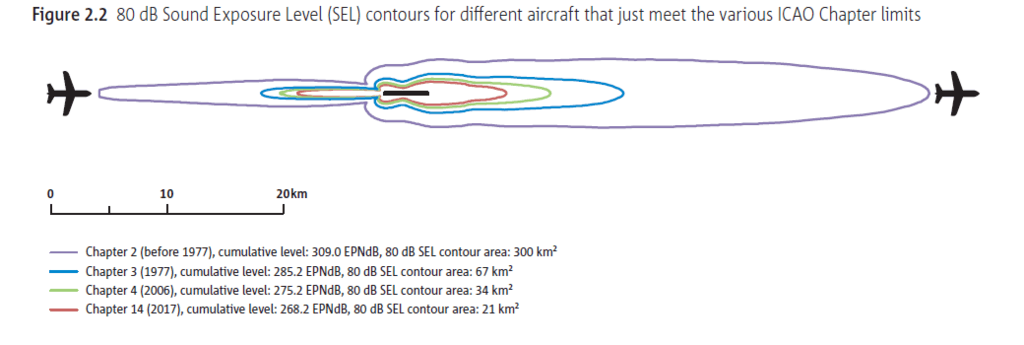Despite the increases in travel by air, since 2005 the noise from aircraft has been reduced by one decibel. According to the calculation models applied by the Swedish Transport Agency, this means that thousands of people are less exposed to aircraft noise today than 10 years ago.
The analysis was made in Sweden using data from the eight Swedish airports with the highest number of aircraft movements.
“A lot of people believe that the aircraft noise has increased as the air traffic has increased. In reality, it is quite the opposite. During the last decade, the aircraft noise in general has decreased in Sweden, and it continues to do so,” says Simon Posluk, Head of the Analytical Unit at the Swedish Transport Agency’s Department of Civil Aviation and Maritime Affairs.

This positive development is fueled by the gradual exchange of older aircraft models, as well as by the implementation of new requirements for modern aircraft. For noise exceeding 80 dB, the more modern aircraft that comply with the latest ICAO regulations, have a noise exposure area which is 70 % smaller than the noise exposure area of aircraft certified according to the minimum requirements applicable to Siaircraft operating in Europe today.
Simon Posluk further explained “what this means is that the number of people affected by noise will be significantly reduced compared to today, if the more noisy types of aircraft can be exchanged in the future. This reduction has been stable over time, and we expect an even steeper descent of noise in the future as older aircraft are replaced with more modern ones”.
The Swedish Transport Agency monitors aircraft noise continuously. It is also the national authority appointed by applicable EU regulations to implement operational restrictions at airports due to noise.

Balanced Approach to Aircraft Noise Management
Aircraft noise is the most significant cause of adverse community reaction related to the operation and expansion of airports. This is expected to remain the case in most regions of the world for the foreseeable future. Limiting or reducing the number of people affected by significant aircraft noise is therefore one of ICAO’s main priorities and one of the Organization’s key environmental goals.The main overarching ICAO policy on aircraft noise, which contains details on all the elements that can be employed to achieve noise reductions, is the Balanced Approach to Aircraft Noise Management. This can be found in ICAO Doc 9829, Guidance on the Balanced Approach to Aircraft Noise Management.
